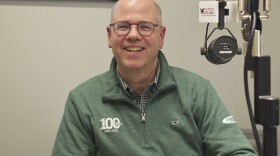-
Country Financial is one of Bloomington-Normal's largest and longest operating businesses. What you may not know is Country Financial did not start in Bloomington.
-
The implementation of climate and environmental policy may become more challenging during the Trump administration, but the fight is far from over, according to one national environmental advocate.
-
Next year's budget proposal for the National Oceanic and Atmospheric Administration, or NOAA, amplifies previous worries with potential cuts to several key programs and projects. WGLT talks to three Central Illinois experts about the possible consequences.
-
The Trump administration took the unprecedented step of halting work on the next National Climate Assessment last week, dismissing all 400 volunteer scientists who were tasked with writing the new version of the report.
-
The closure of four of the six Regional Climate Centers across the U.S. occurred after funding from the National Oceanic and Atmospheric Administration ran out. A recent report stated that the Trump administration plans to propose a 25% cut to NOAA's budget next fiscal year.
-
Photographer and filmmaker Jason Lindsey first started sugar making during the pandemic as a way to get over the winter-spring hump. The centuries' old practice is threatened by climate change — capturing in his short film, 'It's Time.'
-
A wood building material can be used in high-rise structures, giving it the potential to replace materials that are bad for the climate, while also locking carbon into buildings for decades.
-
While the president-elect promises clean air and water, climate and equity take a back seat to fossil fuel excavation.
-
On this episode of "Twelve Thousand Bombs," you'll hear from climatologist Lili Xia of Rutgers University. Xia was the leading author on a landmark 2022 research paper in Nature Food detailing climate models and the potential for widespread famine in the aftermath of a nuclear conflict.
-
On this episode of "Twelve Thousand Bombs," you'll hear from climatologist Lili Xia of Rutgers University. Xia was the leading author on a landmark 2022 research paper in Nature Food detailing climate models and the potential for widespread famine in the aftermath of a nuclear conflict.
Play Live Radio
Next Up:
0:00
0:00
Available On Air Stations









